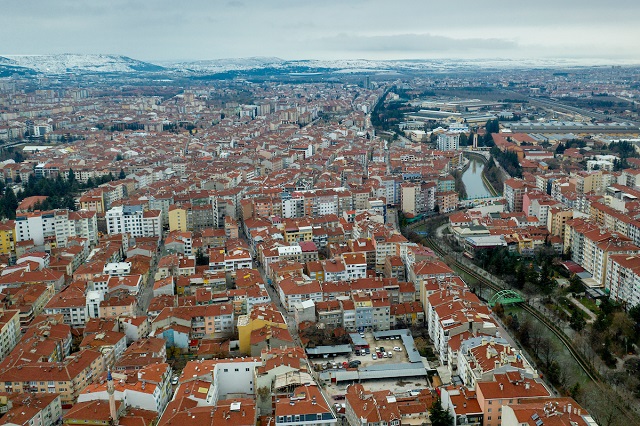A city without buildings is simply not a city. And yet when it comes to climate action, buildings tend to take a back seat to transport, energy production and industry.
Making buildings more energy-efficient is the cheapest way to reduce emissions known to humankind and provides some of the greatest co-benefits for urban resilience, development and quality of life. Yet 2018 marked the third consecutive year in which the improvement rate for energy efficiency slowed.
This is a mistake. Building construction and operation is already the biggest single contributor to energy-related CO2 emissions globally, accounting for 40 percent of them. And global building stock is set to double by 2060.
The overall trend may be going in the wrong direction, but there are leaders to learn from in this space. Eskişehir, a Turkish city of 870,000, is one of them.
Eskişehir, Turkey Embraces Energy-Efficient Buildings
Eskişehir has long been a champion of innovative urban development, recognized for its work on sustainable mobility as a finalist for the 2019 WRI Ross Prize for Cities. In 2016, the city joined the global Building Efficiency Accelerator, a public-private partnership of businesses, NGOs and research organizations assisting local governments in improving building efficiency in their communities.
With the technical support of WRI Turkey Sustainable Cities, the Eskişehir Metropolitan Municipality has been developing and implementing a suite of building efficiency policies and projects.
Eskişehir established its building efficiency projects by engaging people from Turkey’s public and private sectors and civil society, as well as the global Building Efficiency Accelerator platform, which includes international experts from research institutions, NGOs, academia and business. A few priority projects include:
1. Greener Municipal Buildings: Eskişehir declared that all new municipal buildings must perform at or above the “Class B” energy-efficiency class according to the national building performance certification, saving 30-60% more energy than what Turkey’s national Building Energy Performance Regulation requires.
2. Energy Audits: All new and existing municipal buildings must also measure their energy use. This policy allowed the city to start a database of the most energy-intensive operations and strategically target retrofits. First up: the city’s central bus station.
3. Job Training: Eskişehir officials recognized the economic opportunity of new green jobs, but also that current architects, engineers and municipal technical staff needed additional training to capitalize on this opportunity. In collaboration with Building Efficiency Accelerator partners, including Danfoss, Siemens, Philips, TURSEFF and the Turkish Green Building Council, the city organized training workshops on smart cities, energy-efficient lighting, energy management and district heating, among other topics.
4. Public Awareness-Raising: Since market demand for greener buildings can enhance compliance with new policies and create political headroom for even greater ambition, Eskişehir initiated a public awareness campaign to generate demand for energy-efficient buildings and promote behavior change. This campaign included TV spots, billboards and a website featuring energy efficiency tips. The city even hosted a youth festival, where 500 children could play energy efficiency-themed games and learn how to be more sustainable in their own homes.
To deliver sustained progress against these priorities, the city is now designing a management scheme, possibly including a dedicated Municipal Energy Management Division, to weave building efficiency into the city’s energy master plans.
Eskişehir’s Building Efficiency Advances National Action
Even more impactful, Eskisehir is a frontrunner city in implementing Turkey’s National Energy Efficiency Action Plan, which outlines national goals for energy efficiency in buildings and other sectors through 2023. The national plan aims to set energy-savings targets for public buildings, boost renewable energy use and establish nearly-zero-carbon buildings. Eskişehir’s plan goes beyond the national goals in some cases. In addition to advancing the National Energy Efficiency Action Plan, Eskişehir’s initiatives show other cities how they, too, can align themselves with the national plan.
Better Buildings, Better Climate
With today’s technology and advances in architecture, construction and digitization, energy efficiency alone could contribute more than 40% of the global emissions reductions necessary to reach global climate goals. What has been lacking is ambitious and synchronized policies between national and local governments. Even national governments proactive on climate tend to have a blind spot for buildings, while local governments usually lack technical and financial capacity to realize their potential. Eskişehir shows how, working together with the private sector, civil society and others, municipal governments can help break this paradigm.
This post is part of a series on how virtuous interdependency brings greater climate action when national governments and regional, state and local governments and businesses work together.


